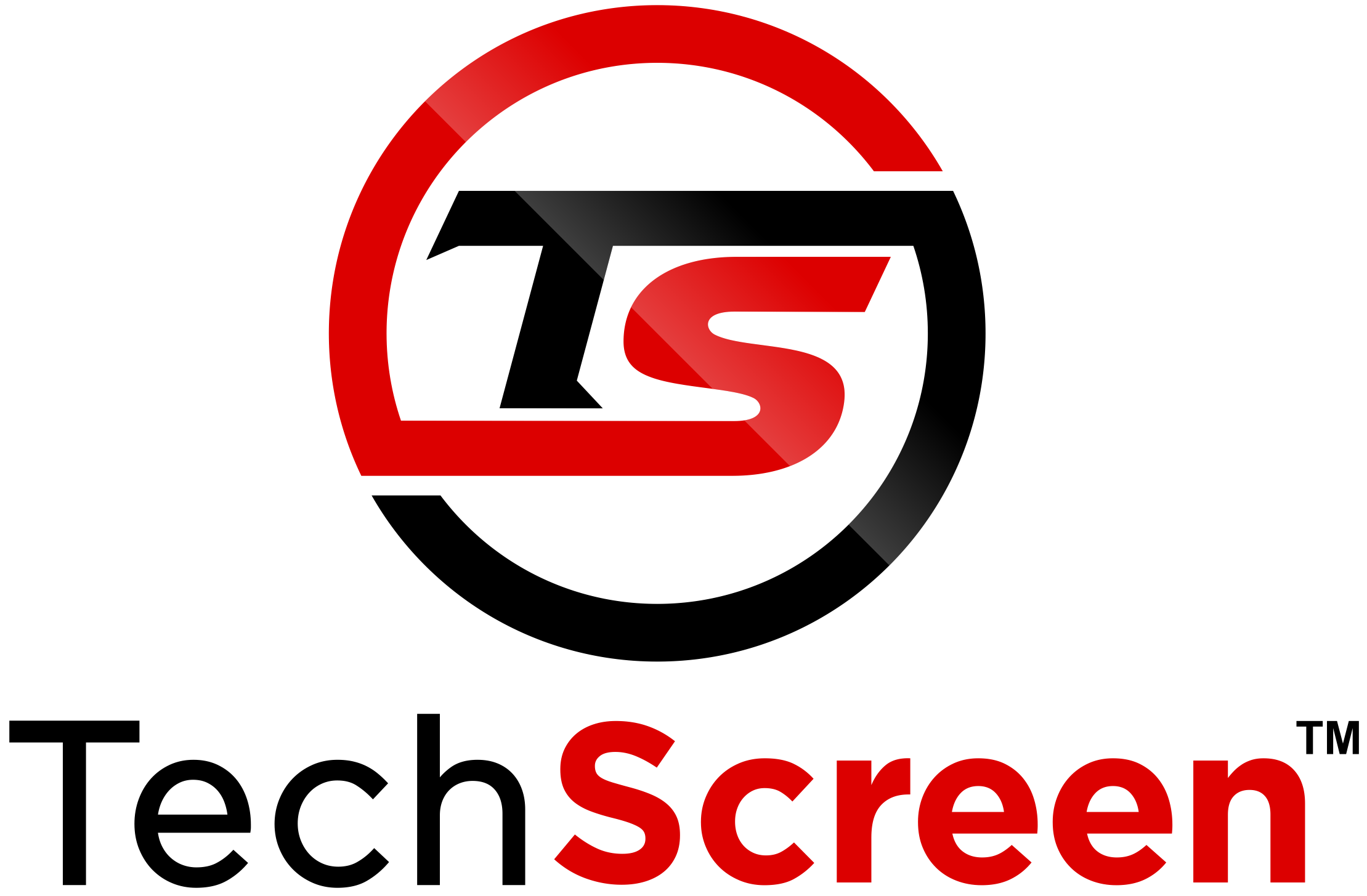he HR Tech Universe has no shortage of product categories: Applicant Tracking Systems, Workforce Management, Compensation, Time & Attendance, Performance Management, Learning Management Systems, Sourcing, Technical Evaluation and Candidate Relationship Management are among the portfolio of tools available to HR organizations.
IT recruiters may make use of many of them as an employee, but there’s just a handful of these tools that they use to help execute their jobs. The ATS and sourcing tool spaces are marketplace blizzards and there are plenty of products that perform technical evaluation. There are no products in the HR Tech space that provide technical evaluation of candidates AND technical training for Recruiters in one platform.
TechScreen is planting its flag in defining a new category of product: A Technical Literacy Platform. The difference with this kind of product is that the content fulfills those two distinct purposes. The technical content is distilled into such visual simplicity and is presented in such small slices that it is easy for it to be internalized by a user. It’s primary purpose it to help elevate a user’s technical literacy every time they touch it, whether they are taking a sip to learn a technical tidbit or to use a slide to ask a technical qualification question.
Think about how you learned multiplication tables in the third grade using flash cards: 2 x 6 = 12; 3 x 7 = 21; 4 x 8= 32. We apply the same approach to explain how TCP/IP sends a message from A to B, how columns and tables let you find something in a database and how a web service lets people find it and use it in an application.
Even the most organized recruiter can find staying laser-focused a steep challenge. A recruiter’s day is a string of staccato inbounds, constantly forcing them to re-direct their focus to the next top priority. Finding time to ‘learn’ amidst this asynchronous anarchy is almost impossible, so we knew presenting learning content must meld seamlessly into the frenetic pace of their jobs. That’s when we had our epiphany.
We have to present technical training content like a multiplication table flash card to let the recruiter use it to ask candidates qualifying questions. The recruiter will incrementally retain content at the pace of their personal osmosis for recall.
We first hit the market in 2016 with the world’s only technical interview platform that empowered the recruiter to conduct a technical interview, even if they were not technical themselves. One of our goals was to help our users incrementally improve their technical insight as they conducted technical interviews. We have had a lot of great customer success stories, but we found user adoption would follow a standard bell curve and utilization was inconsistent at individual clients.
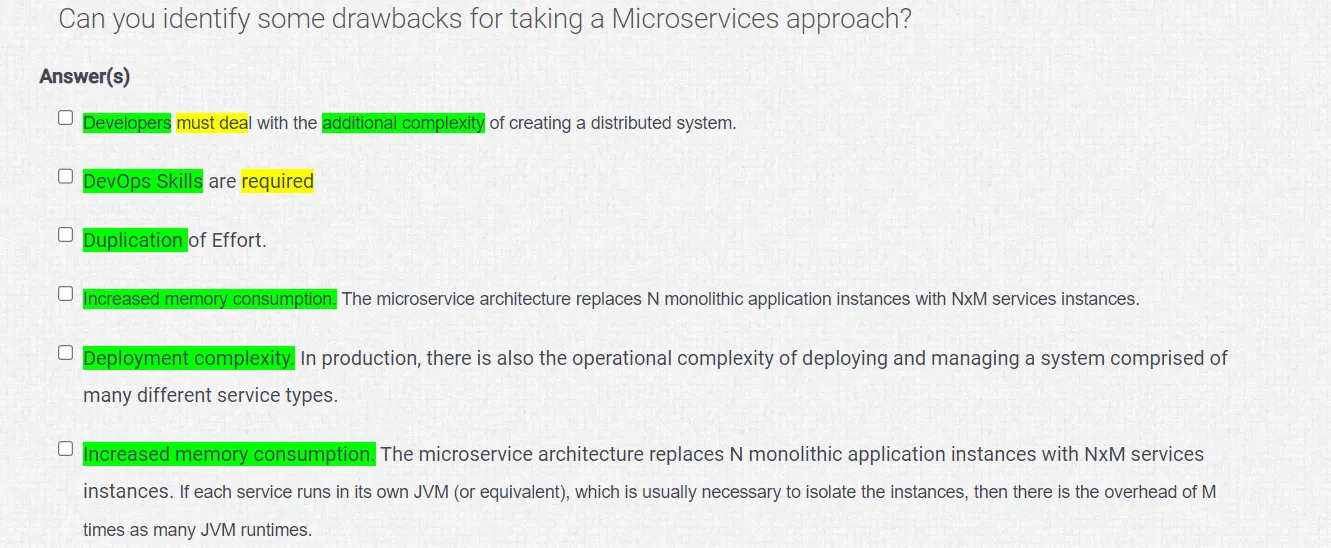
All of the content of our technical interviews are in Engineering language because they needed to reflect the way a candidate would answer the question.
Asking technical questions and and tracking the answer takes time to get acclimated to it, but some recruiters don’t have the patience or time to do it consistently. We wanted to help elevate our users’ technical insight, so we added the TechScreen Certified Recruiter technical training program in Q4 of 2021. We broke down advanced technical concepts with visually intuitive simplicity across subjects like Application Architecture, Networking, Databases, QA, DevOps, The Cloud, REST & Web Services, Big Data & Data Science, The Internet of Things and Cyber Security.
The hope was by providing simple explanations to technical subjects in the training material, our users would be able to absorb technical concepts far more readily than the incremental insight they may gain by using the interview platform. However, the utilization of the training content shows that users either felt the training would take too long or there was some other roadblock of which we were not aware.
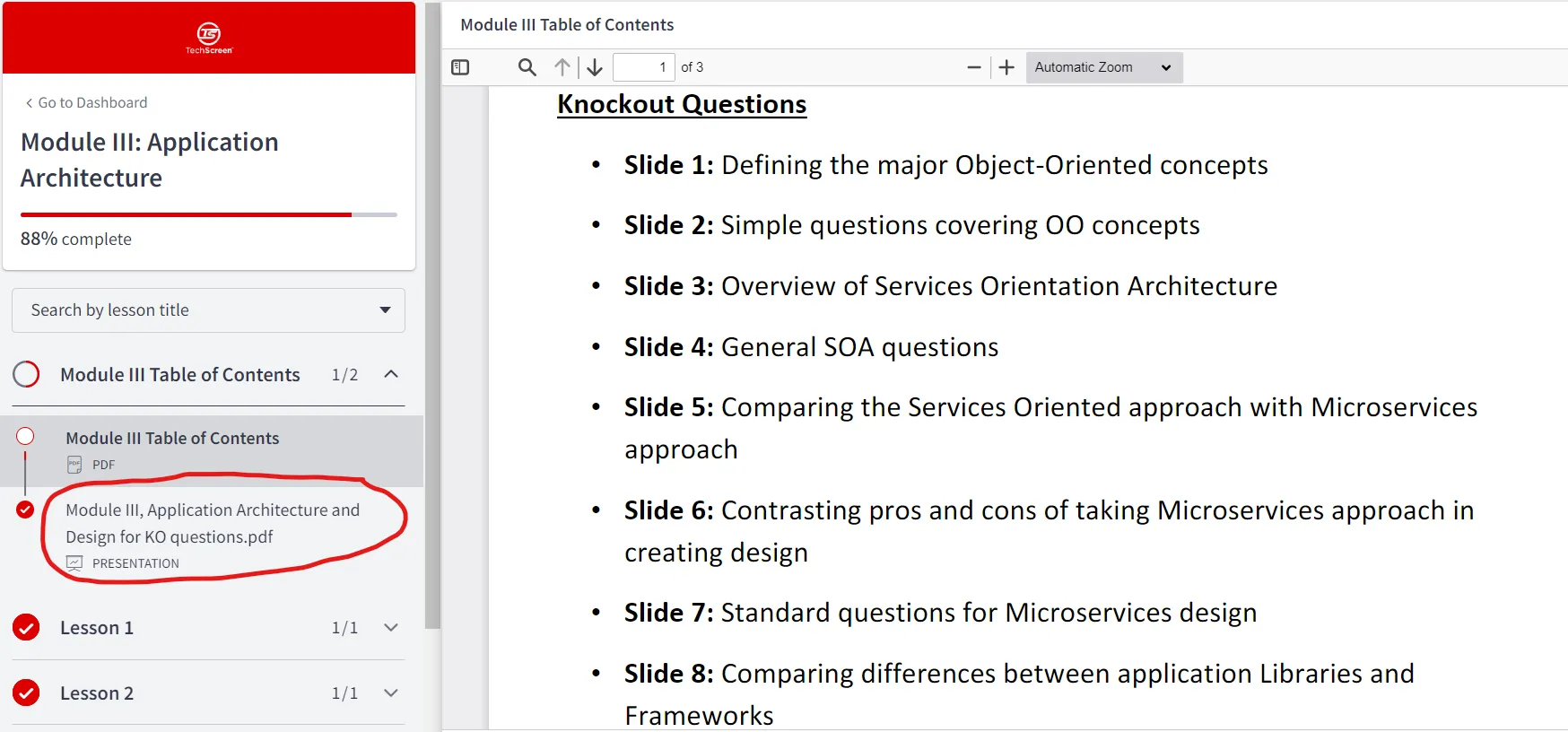
This shows where we put the technical screening questions consisting of slides from the training
The final stage of improving the platform was to extract some of the slides of the technical training content so it could be used to generate qualification questions with one huge difference: All of the content in these “Knockout Question” slides are in natural language so a high school freshman could use them to screen a Sr. Software Engineer or an Architect.
Accessing the training content requires a user to stop working so they can review the narrated slides, which are broken down into individual lessons. We don’t just pile a bunch of terms and definitions; we explain a narrative that unfolds like a story, so it takes a user’s undivided attention for blocks of time. The utilization numbers inside the library content told us that users were not diving in, despite the fact that it was so visually intuitive.
This is what told us that we needed to give users content where they could jump in out in a way that was in sync with a recruiter’s hectic days. An IT recruiter doesn’t HAVE to regularly go through training but they always have to screen candidates on a daily basis. We knew we needed to make content that helps them execute their primary job function.
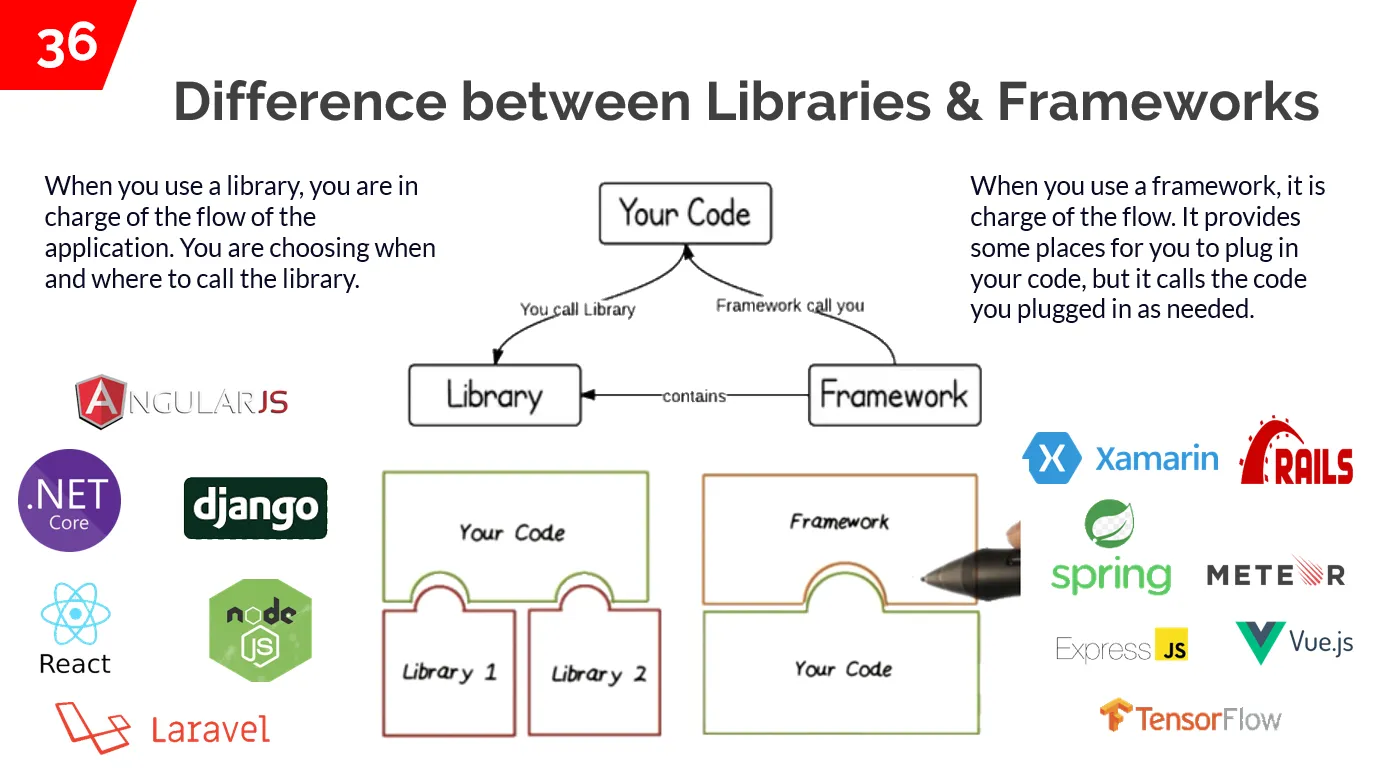
This slide is a great example of how we present an image that helps a user easily recall it.
We cherry-picked slides from each of the 10 technical modules and placed them just below the Table of Contents. A user could dip in to grab one slide, listen to the narration that explains what’s there, hear the purpose of the question and what red flags may exist in a candidate’s answer. Now the recruiter can ask a point-blank question that gives the candidate no wiggle room to offer some nonsense answer. The entire transaction could take 2–3 minutes.
Having all of the content in natural language is a night and day difference compared to the technical interview platform. Our intention is to give users content that is a force-multiplier that serves as a catalyst that helps them execute a core job responsibility. Few things are more important than an IT recruiter qualifying a candidate to decide if they are going to present them to a hiring manager.
We want to help users elevate their technical insight each time they engage with our platform, whether it is screening a candidate or learning more about a select technical subject. So much of the training available for recruiters is based on terms and definitions, or provides 50,000-foot flyovers. “This is the front end, this is the back end and here are the phases of the software lifecycle development …”
In the Networking module, we discuss the rise and fall of a group of once-dominant companies whose demise was quicker than their ascent. Companies like Digital Equipment, Wang, Data General and Burroughs dominated in the 1960s and 70s and into the early 80s, but they each built proprietary hardware, software and operating systems. If someone was on another platform, communication was a massively expensive and complex integration challenge. In most cases, the companies with PC-based systems just stopped talking to the companies running their own platforms.
The corporate graveyard they left behind was the driver behind the International Standards Organization defining the Open Systems Interconnect (OSI Model) that created a 7-layer application/hardware stack that had common protocols on each layer. This development shined a light to the entire tech sector of the critical importance of Open Standards.
The DevOps module begins in 1930 with the Toyota Production System, which is now known as Lean Manufacturing today. Six Sigma followed as another process created to reduce defects in massive manufacturing environments. The software industry followed suit with a process called Waterfall, which gave way to the shorter, sprint-driven Agile approach. As companies needed to push out software releases in shorter cycles while injecting more automation, Agile gave way to DevOps.
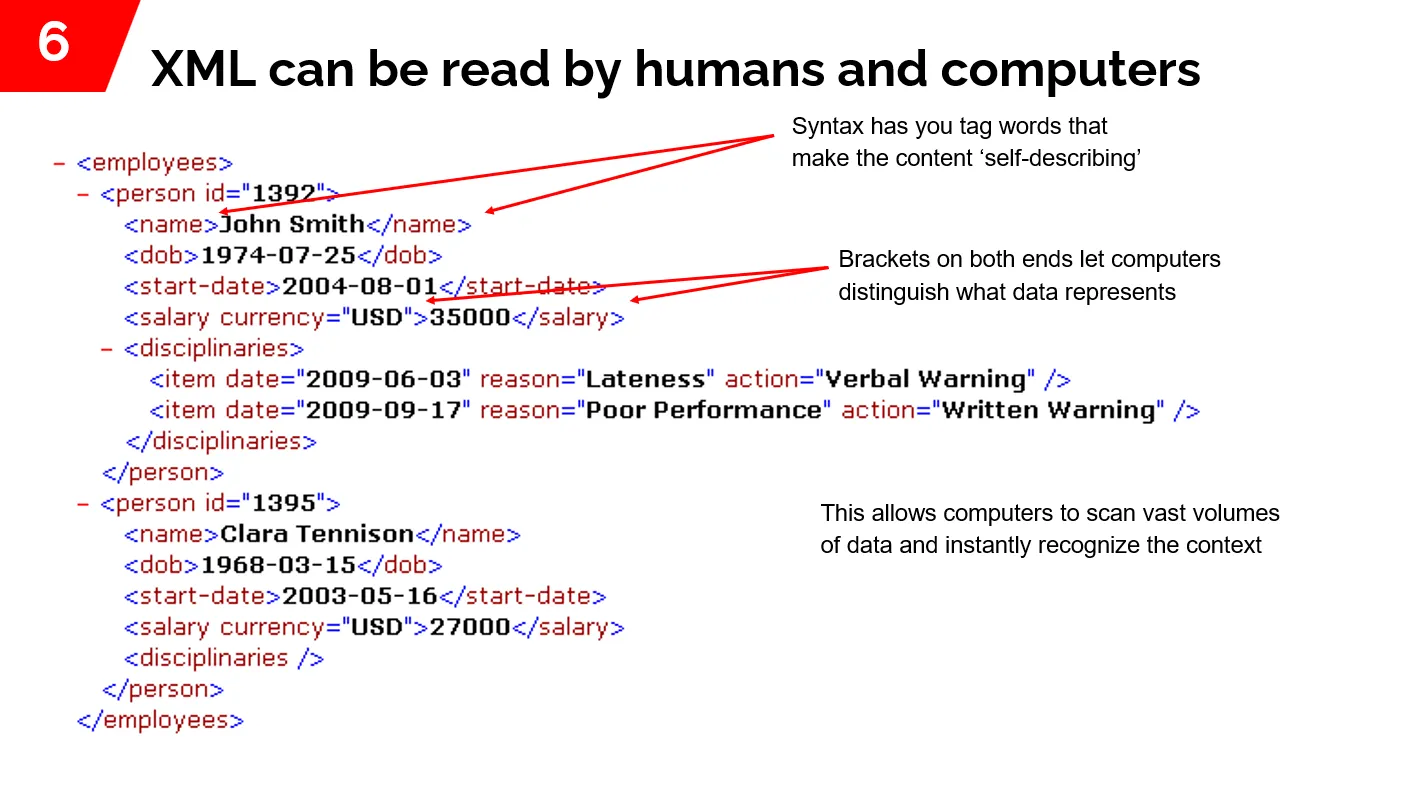
XML uses syntax that is self-describing and uses natural language, making it easily understood by a user.
The Web Services module starts by highlighting a key project IBM did to solve a problem in the Legal industry in 1969. Over 90% of corporate data was captured in documents at this time and lawyers would have to read almost impossible amounts of material to prepare for cases. This team came up with the idea of putting tags around individual words so the computer could recognize the word’s inherent meaning, letting the computer scan the massive amounts of case history. IBM’s solution was something called the Generalized Markup Language, which evolved to become the Standardized Generalized Markup Language. SGML was the progenitor to HTML and finally XML, without which web services could not exist.
We also explain advanced technical concepts by comparing them in a way a non-engineer can relate to them. We explain Object Orientation by comparing them to sections of a house. We explain a TCP handshake by comparing it to the interaction of a door-to-door salesman talking to a home owner. We explain Application Architecture by comparing it to sections of a car and we compare the OSI Model to the steps involved with ordering pizza for delivery to your house.
Our Technical Literacy Platform is a paradigm shift for IT Recruiters and is built upon our proprietary methodology we call Dynamic Engagement, which has four primary pillars.
- You must vastly simplify advanced technical content so it can be easily grasped by a non-technical person
- It must be served up in such tiny slices that it can be instantly internalized for future use.
- It must be delivered in real-time so the recruiter is using the content to execute their core job responsibility.
- You must remove any dependency for any of the content to be committed to memory.
Our platform is the missing piece that will let IT recruiters increasingly have conversations with managers and candidates on a peer level. Their replies will not be nuggets that had to be “remembered”. The regular use of our platform to screen candidates using visually intuitive training content will incrementally expand their knowledge base so the recall of the information becomes increasingly reflexive over time.
IT Recruiters deserve a seat at the table when interacting with managers and candidates. They just needed a roadmap on how to get there.
